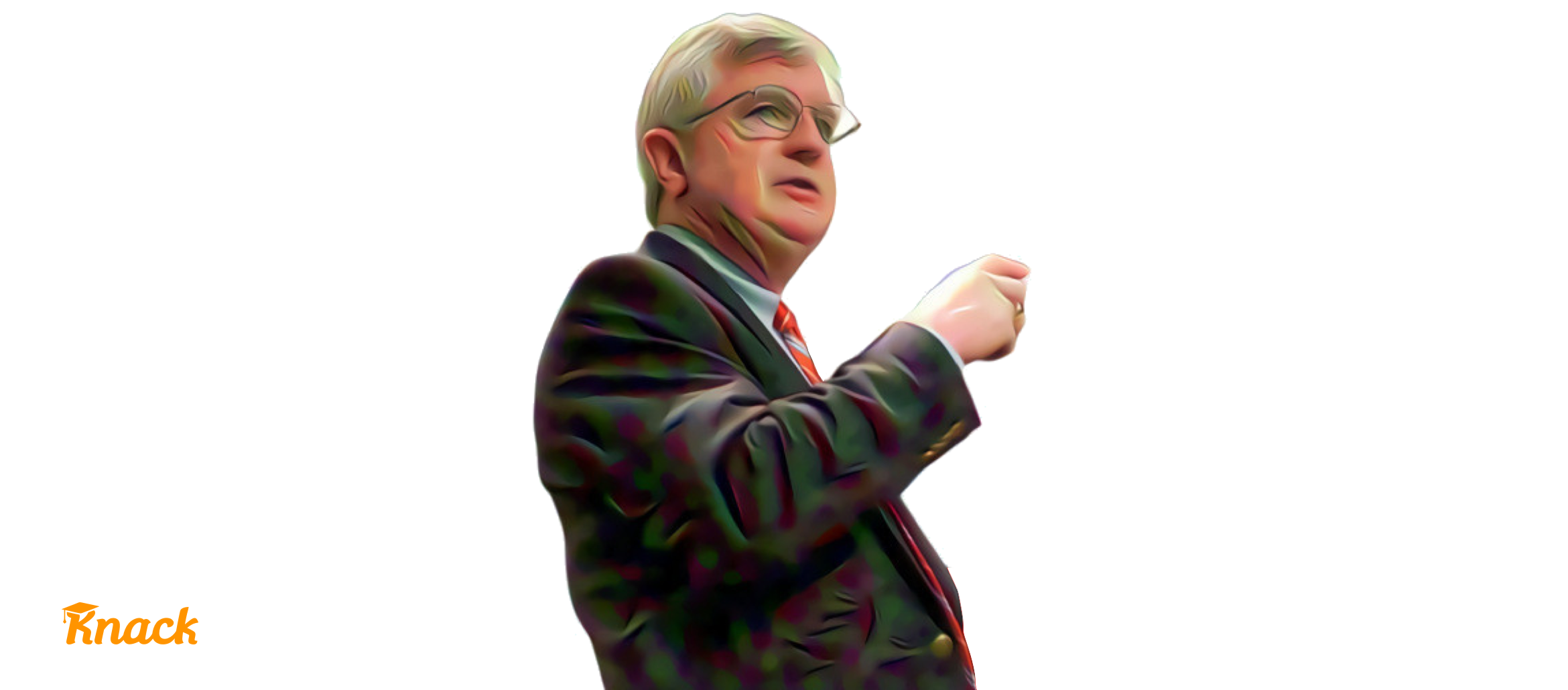High-Impact Practices (HIPs) are a catalyst that can accelerate student learning and development. They allow ordinary experiences to deepen their effects, and make a student’s time in college that much more meaningful. It’s something that I’ve written about before and have a lot of admiration for. HIPs make the outcomes we know are important for students to achieve, that much more apparent and measurable.
All of this is why I was so excited and privileged to get the opportunity to have a brief conversation with Dr. George Kuh, who is credited with founding some of the most important tools and frameworks higher education professionals use today. We talked about a lot, and I’m very grateful to be able to share some highlights with you all here.
Dustin Ramsdell: How did you come to found the National Survey of Student Engagement (NSSE)?
George Kuh: I was invited to get involved in something that eventually became NSSE. We had a tool at Indiana called the College Student Experience Questionnaire (CSEQ), which was developed by a colleague who was at UCLA, and he bequeathed it to me back in the early 90s. Two thirds of the questions for the NSSE came from CSEQ. What pushed NSSE into the national conversation back in the 1990s was the overemphasis on college rankings from places like US News and World Report. People in business knew nothing about undergraduate education, it was all about what institutions had— number of books, faculty with PhDs, SAT scores… It was all about these inputs and nothing about what actually happened. Pew Charitable Trusts convened some people to figure out an antidote and change the conversation. The survey would go directly to students about how they were spending their time. Most institutions had no clue about this stuff. We rolled out the first survey in 2000, and I did that project for around eight years formally. We ended up developing more surveys too— one for faculty, one for beginning college students, one for law students. It has become one of the biggest ongoing operations in American higher education.
DR: Tell me a little bit about what you’re working on now.
GK: I’m still working on all those things that were started around 20 years ago. For example, NSSE that we created back at the center I founded at Indiana University, the Center for Post Secondary Research. I’ve also still been involved with the National Institute for Learning Outcomes Assessment, which is based at the University of Illinois where we founded it back in 2007. I’m continuing to consult and speak on occasion as well.
DR: What do you believe are the greatest challenges that higher ed is currently facing?
GK: Credibility, cost, and completion. College costs have outstripped inflation for decades now. Completion has been a perennial problem— around 30% of students have dropped out by their third year and some institutions are lucky to have 50-60% six year graduation rates. If a student takes out debt, then doesn’t finish, there is a lot of suspicion out there. This was also fueled by the Great Recession, where students went to college, they got debt, and they didn’t get the kind of job they wanted. Also, are students leaving college with the kinds of skills that will enable them to make their way? This is where HIPs come in. The more experience students get with things for which they’re not prepared but they can learn from others, they develop resiliency and self-mediating skills.
DR: Do you feel like there are common misconceptions about High-Impact Practices?
GK: It’s not only the activity, it’s the extent to which students are asked to think about what’s happening to them, how well designed it is, how often they get feedback, the quality of that feedback, and how often they interact with their peers around the experience they’re having. For example, just because a student has had a service learning experience, it doesn’t make it a High-Impact Practice. Or that simply because a student does research with a faculty, they’re going to benefit in this unusually positive way. They might, they might not. The problem comes when the student really doesn’t interact in any kind of substantive way with somebody from the campus or with their supervisor. That’s when the students don’t get nearly as much out of the experience.
DR: What would it take to make peer tutoring a High-Impact Practice?
GK: You don’t just turn a peer tutor loose without training them or setting expectations for their work. That’s going to rise to the level of a significant investment over an extended period of time. So it’s got to be enough effort extended for the benefits to accrue and then there needs to be some substantive interaction with others. Somebody in the tutoring center needs to be monitoring the work of the peer tutor and providing feedback so that the tutor’s work improves over time. The peer tutor can then articulate what it is they do, why it is they do it that way, how they know they’re doing it well enough, etc. So this develops a kind of self-regulated understanding of how well I’m performing with these different circumstances and different groups of students. We would call that demonstrating competence publicly, and then there needs to be a kind of scaffolding from supervisors putting questions forward so that peer tutors themselves can grapple with their own work in a way that they hadn’t thought about it before.
Note: This conversation has been edited for brevity and clarity.
We covered a lot of great points and I know this helped inspire me to continue committing to my work with students. I hope that you took something away to reflect on and take action with. I know I did!
